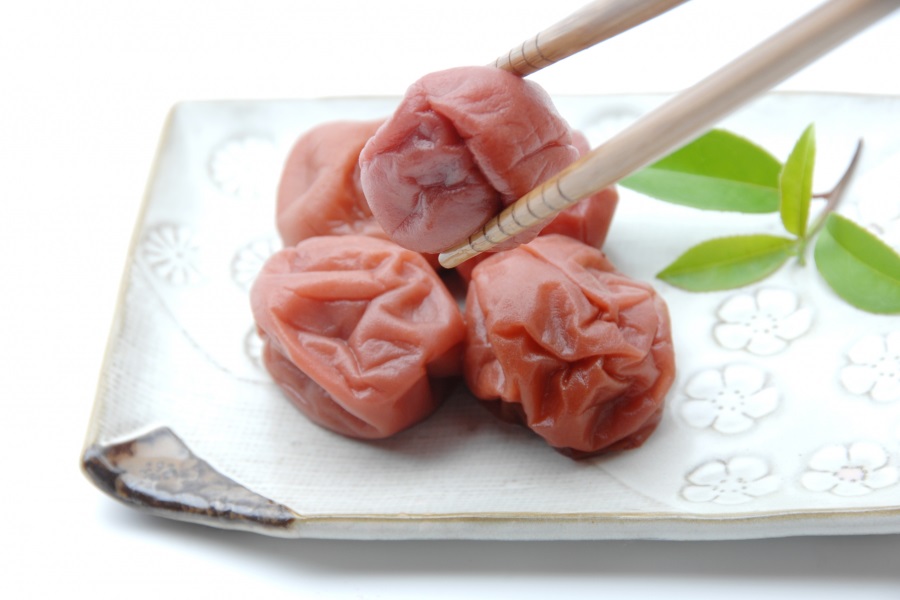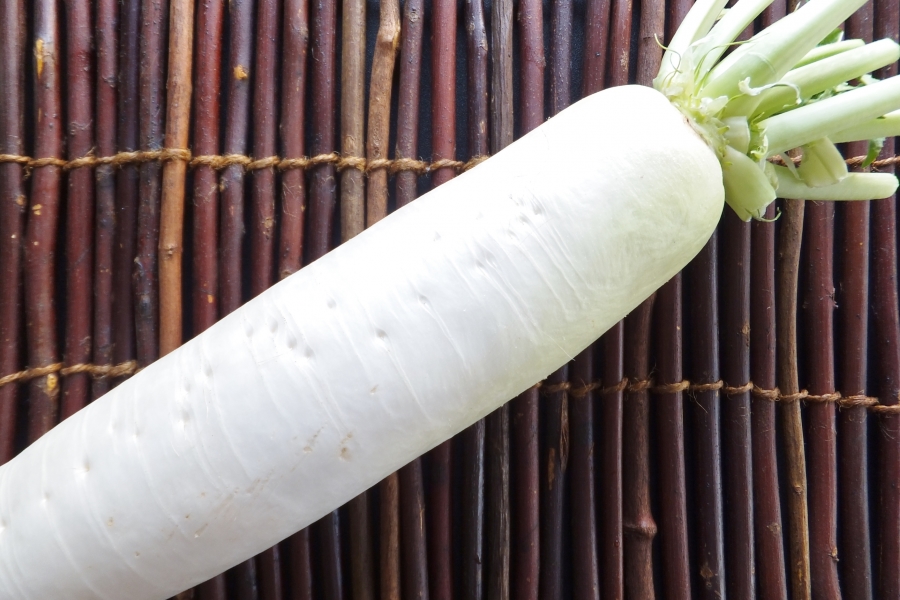Mirin kasu is born from the brewing process of mirin (sweet sake) and is made of sweet rice, malted rice, and shochu. The sweet rice gives it stickiness and a granulated drop shape. The flavor of mirin kasu is faintly sweet, as distinguished from the stronger taste of sake kasu. Contents: What is Mirin Kasu? Mirin Kasu Pickled Vegetables Recipe Mirin Kasu Pound Cake Recipe Baked Cod with Mirin Kasuzuke Recipe Soymilk Banana Shake with Mirin Kasu Recipe Crispy Mirin Kasu Cookie Recipe What is Mirin Kasu? History of Mirin Kasu As described in the book “Wakan Sansai Zue” (Chinese and Japanese All things Encyclopedia) from the rnid-Edo Period, mirin kasu has been consumed since long ago as a “sweet […]
Umeboshi, which means pickled plum, is prepared by pickling ume fruit in salt to dry, and then pickling the dried ume in vinegar with shiso leaves. Various types of umeboshi are available, from soft, large ones to crunchy little ones, all having a reddish color. Umeboshi tastes sour on its own, but it has long been a popular side dish in Japan as a perfect accompaniment to rice. With its long history, umeboshi is indeed a traditional Japanese food. Contents: History of Umeboshi Let’s Make Umeboshi What is Doyoboshi? History of Umeboshi Japanese people began making umeboshi during the Heian period (794-1185). As the story goes, a Heian emperor was able to heal himself from an epidemic plague by drinking […]
Have you noticed a mysterious looking brown item lined up in the pickle section? It looks really strange, and for those of you who have never tried it, its appearance hardly invites you to reach for it. This is a form of pickle called “Narazuke.” Contents: What is Narazuke? Narazuke Recipe What is Narazuke? Narazuke refers to vegetables of the gourd family that are pickled in sake lees. It is said to have originated in the Kansai region of Japan. At one time, it was apparently a very expensive food that only those in the upper class could enjoy. Later, in the Edo period (1603-1868), it came to be widely consumed by the general public. It is said that the […]
Contents: What is Kasuzuke? Selecting Additive-Free, Wild-Caught Fish The Right Way to Make Delicious Kasuzuke Kasuzuke and Health Nijiya’s Seacret Kasuzuke Recipe What is Kasuzuke? The method of using such wild yeast as malted rice to treat fresh seafood may be unique to Japanese cuisine. Among all fish dishes, the exquisite kasuzuke is an indispensable dish in Japanese meals. Kasuzuke adds a distinctive flavor to fish while removing its fishy odor. The rare, sophisticated taste and excellent nutritional value of kasuzuke are now attracting food lovers throughout the world. In Japan, the harvest season for new rice crops is the time when the brewing of new sake begins. When the sake brewing is nearly complete, fresh sake kasu (sake lees) […]
Daikon (Japanese radish) is a typical winter vegetable. Even though it’s available throughout the year, winter is when daikon is at its tastiest. Besides being tasty, daikon has many therapeutic properties. So, organically grown daikon would be the better choice. Contents: What is Daikon Radish? Daikon Radish is an Outstanding Digestive Aid and Improves Blood Circulation. To Get the most out of Daikon Radish, Apply the most Suitable Cooking Method to Each Part. Don’t Waste the Skin! Leaves are Also Very Nutritious! How to Cook Daikon Radish? (Japanese Daikon Recipes) What is Daikon Radish? Organic Daikon – Let’s enjoy every part of it! The most widely known Japanese daikon radish is the Aokubi daikon. It has a less peppery flavor […]




